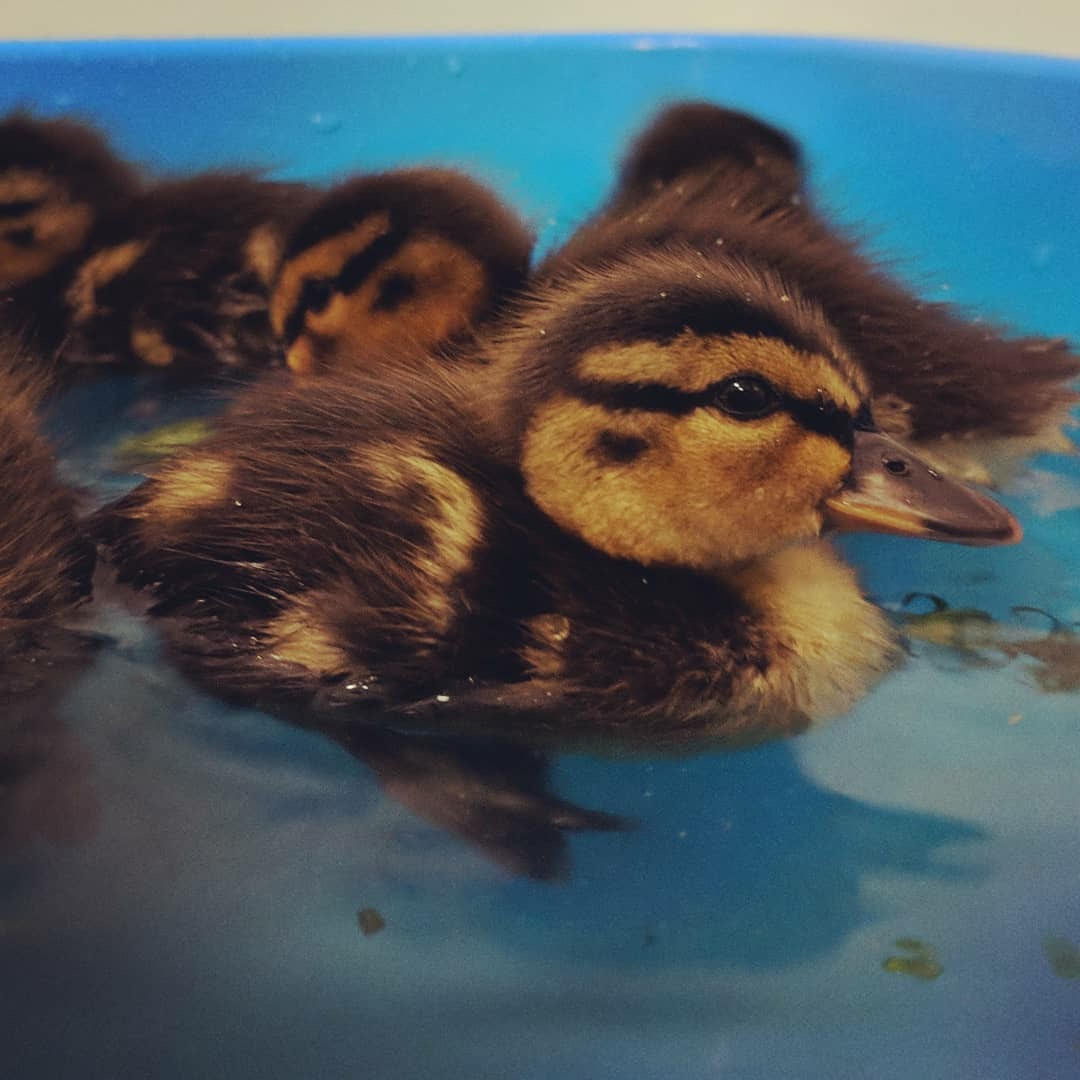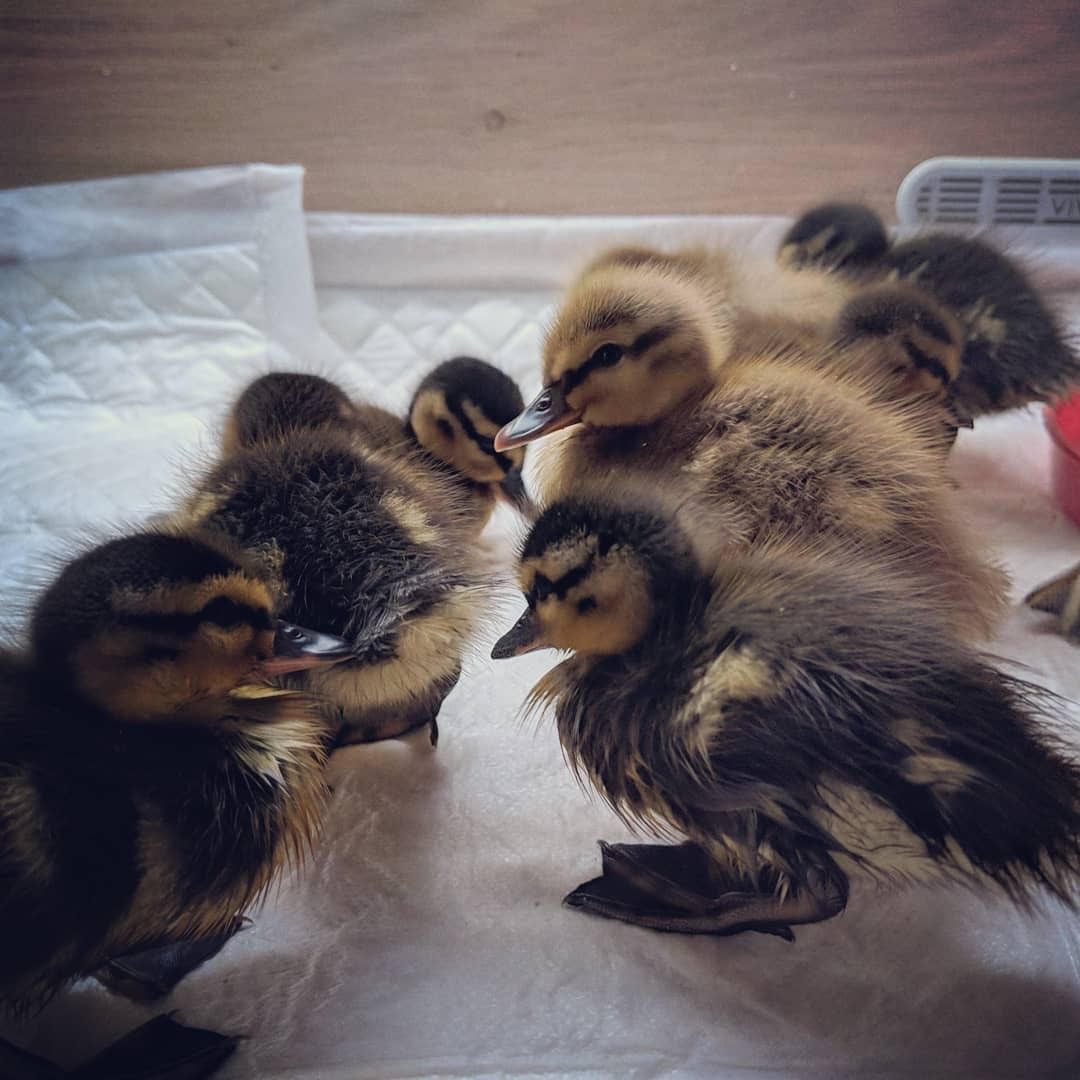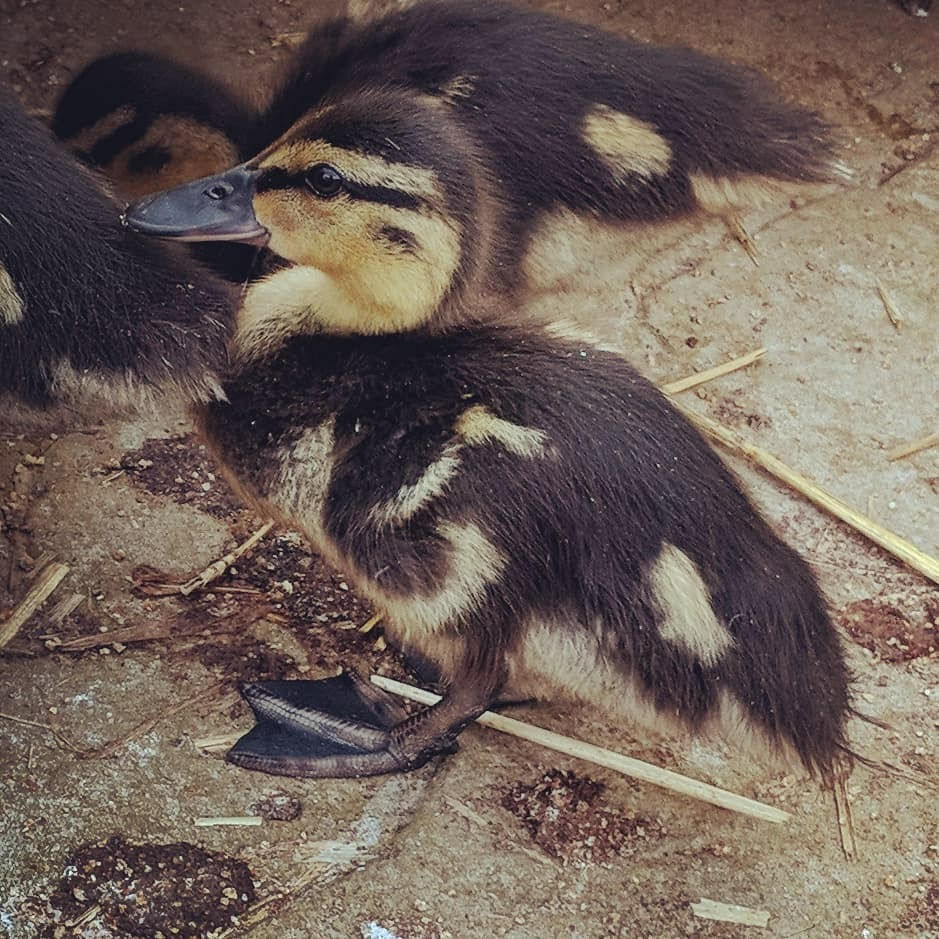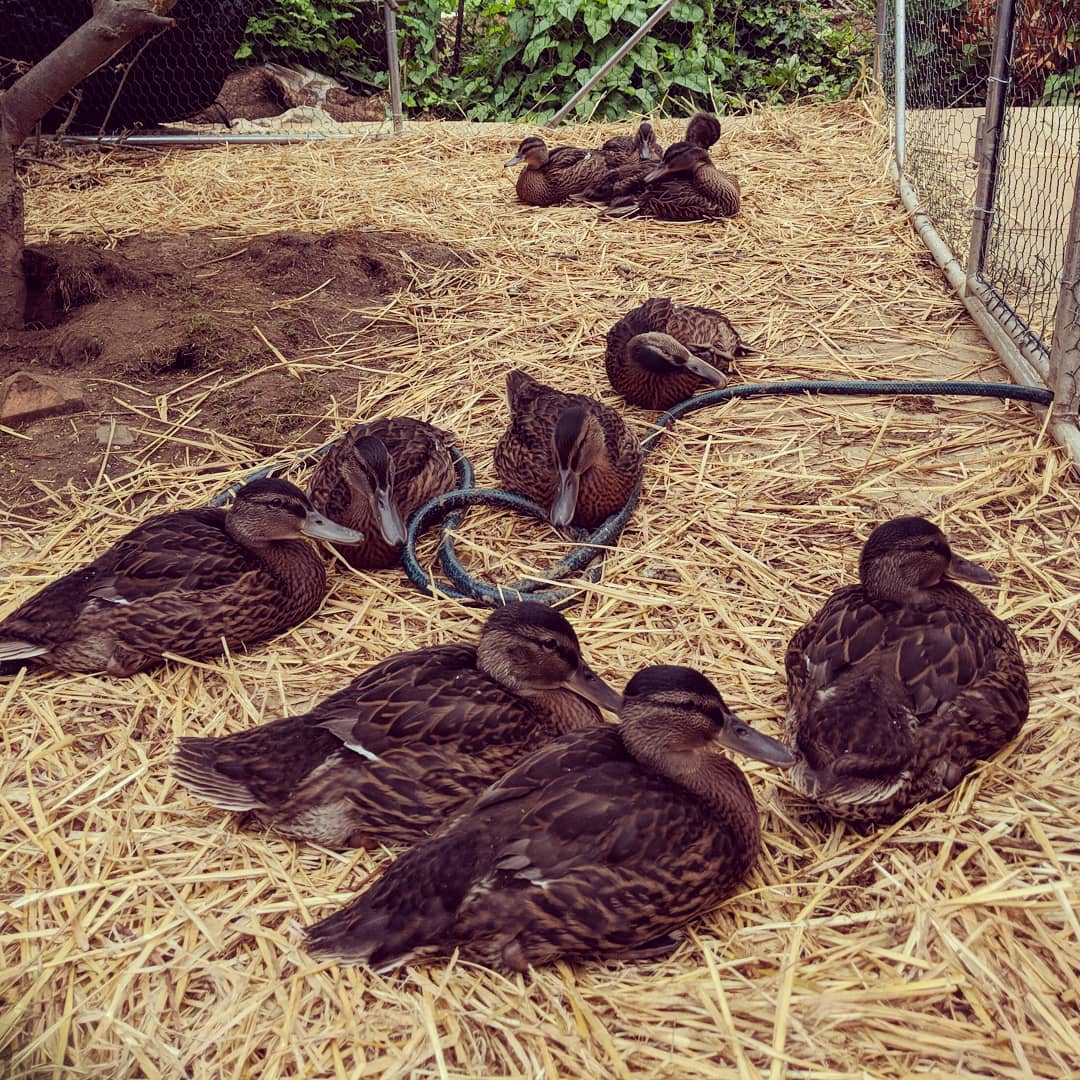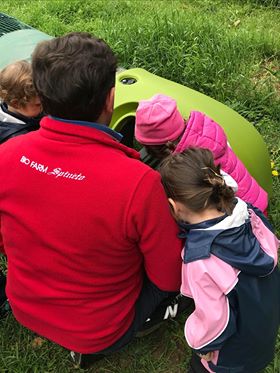
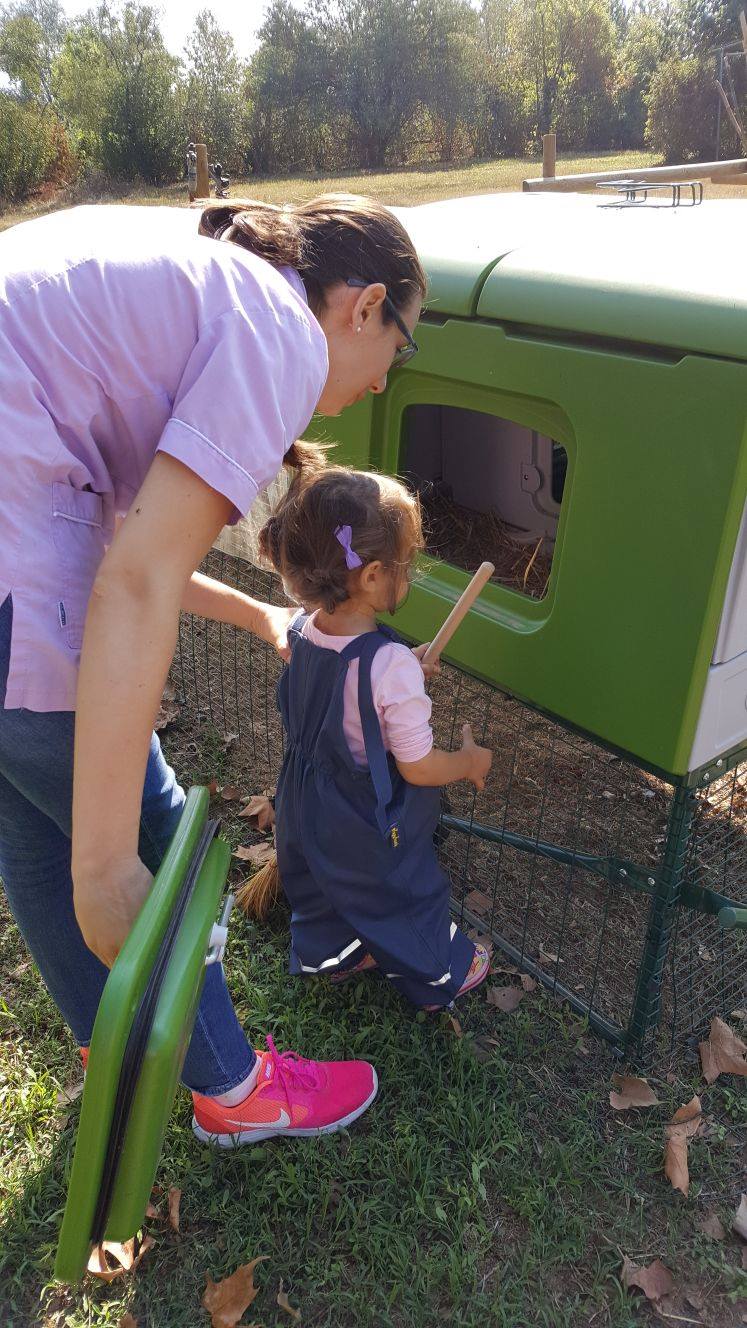

A school in Italy, ‘Agrinido e Agriasilo Montessoriano Al Nido dell’Aquila’ has recently bought an Eglu Cube and Eglu Classic Chicken Coop for their educational programme on nature and pet caring.
We spoke with Mr Colombo’s about their new exciting project.
“Our farm with vegetable garden area produces fruit and vegetable and has recently added a nursery and a kindergarten following the Montessori method.
According to the Montessori method, the outside space needs to be prepared and organised as well as the classrooms inside the building. Therefore, we created and equipped an area
of our farm for the purpose of having children grow and care for the vegetables and also the pets (chickens and tortoises).
We wanted our little students to care for their own chickens for different reasons: firstly, to teach them how to care for another living being, and secondly, for the daily exiting reward of
getting delicious fresh eggs. Moreover, chicken- and pet-keeping has been a valuable starting point to teach numbers to the children, not to mention that the eggs were perfect to
paint and use as Easter decorations!
In order to assure that our students had the best and most educational experience, we needed something practical, clean and safe. In addition, it has to fit in the 55sqm we dedicated to the project. We decided to choose an Eglu Chicken Coop as, compared to regular wooden coops, plastic was easy to clean, highly hygienic, wouldn’t rot and would last for a very long time.
We decided to opt for Omlet’s Eglu Cube, as we valued the possibility to move the coop regularly. We move our Eglu every Saturday, in order to allow our chickens to enjoy new fresh grass every week. We were pleased to discover that one person can easily move such a big coop alone thanks to the wheels.
The size of the coop was also essential: it has to be accessible by small children. The Eglu Cube features a lateral door for easy access to the nest and eggs which is at the perfect height even for 2-year-old children. Thanks to this, our students can easily collect eggs in complete autonomy.
After a year, we wanted to expand the program and we bought another coop, the Eglu Classic, which we use to keep chicks. Keeping chicks helps children learning about time flowing and the phases of life from the egg incubation, to hatching and growing, and the patience necessary to wait for all these changes to happen.”

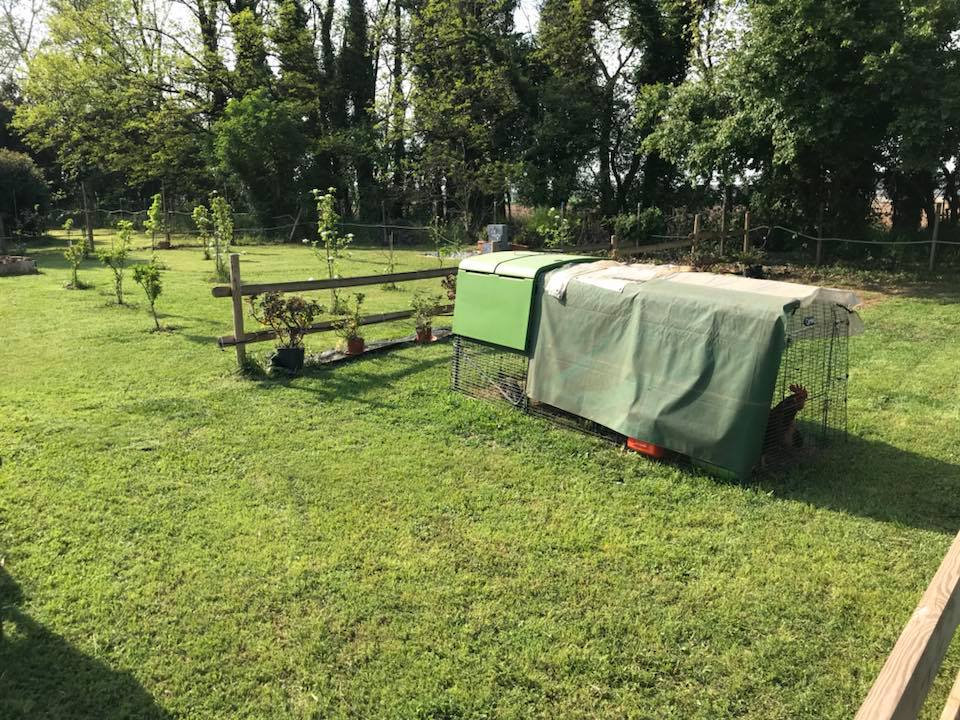
The Eglu Cube Chicken Coop is the ideal way to keep up to 10 chickens in a town or country garden – find out more here
This entry was posted in Chickens on June 13th, 2018 by helenkennedy
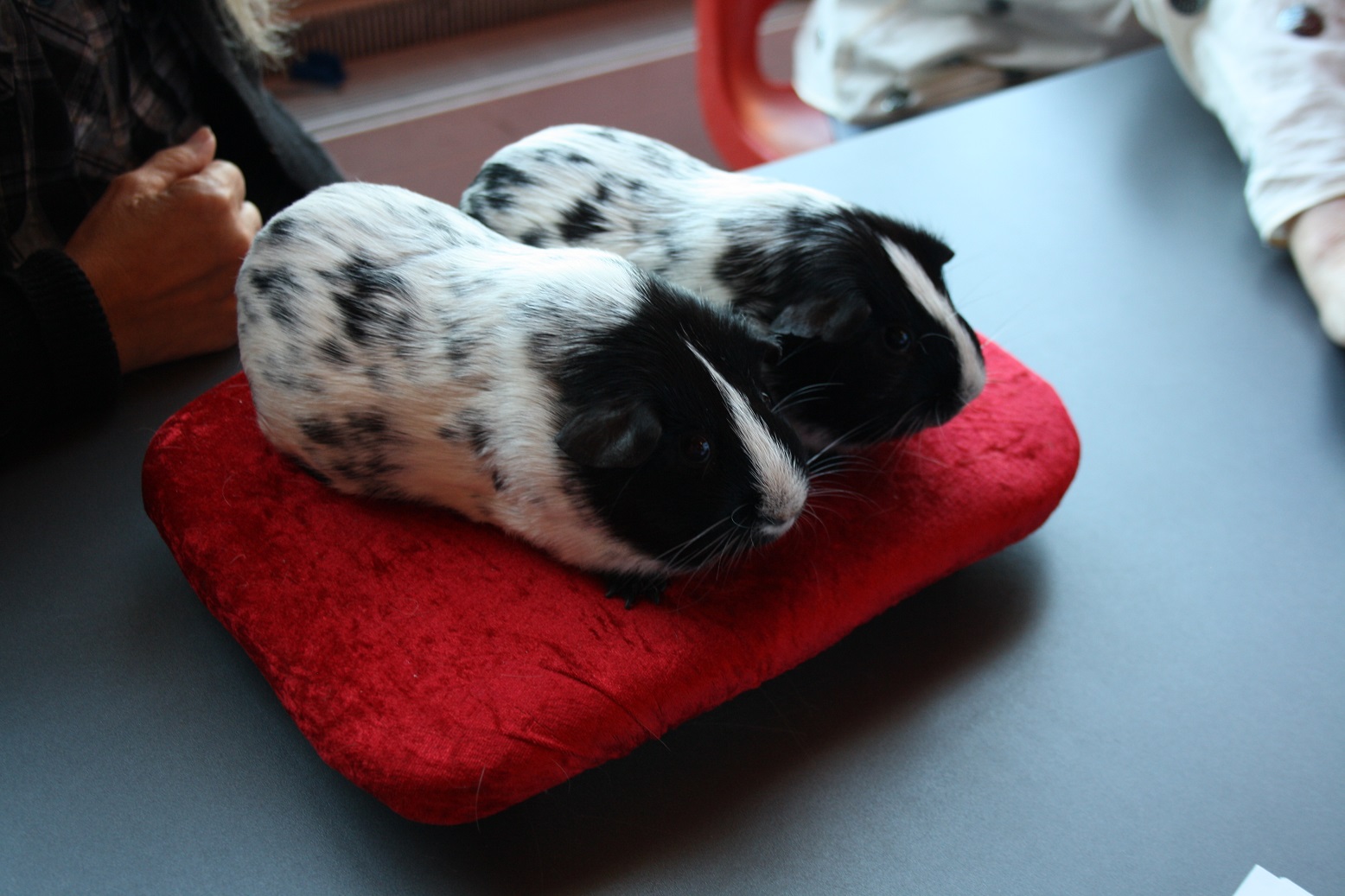
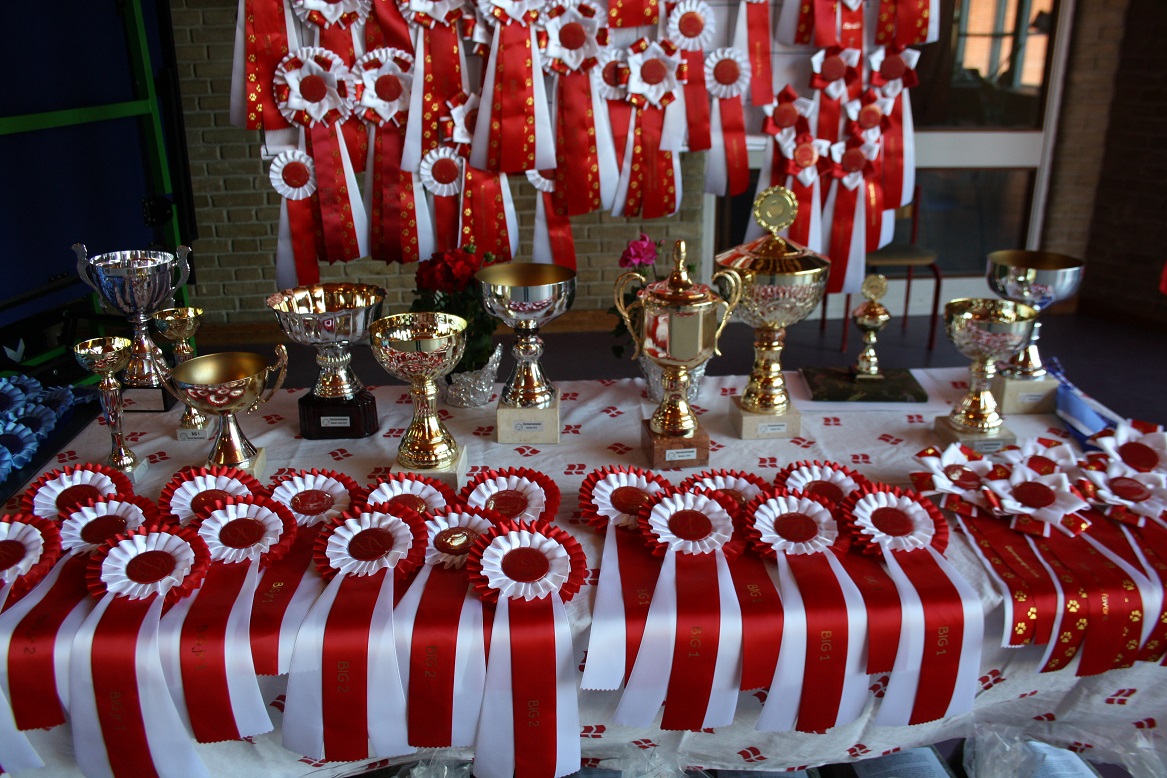

Last month, the Danish championships for guinea pigs were held in Copenhagen. The championships were hosted by Dansk Marsvineklub (The Danish Guinea Pig Association). The association’s purpose is to spread knowledge about the animals, and how to best care for and feed them and shows are held throughout the country where members meet up and exhibit their animals.
There were 3 main classes:
- Pure bred: Judged by the standard for each breed, for example whether the hair is properly coloured, if the eyes and ears are large and are placed correctly etc.
- Pets: All animals are welcome and emphasis is placed on the animal’s general condition, well-being and temperament. Denmark is known for the best pets throughout the Nordic region. We will return to this point…
- Juniors: A class for exhibitors under the age of 15. Same requirements as for the pets class, however, here emphasis is also placed on the interaction between children and animals and the child’s knowledge of the daily care
In addition, there are also some “for fun” competitions:
- Dress up competition
- Cucumber eating
- Weight competition
WINNER OF THE DRESS UP COMPETITION
The winner of the dress up competition was 5 month old Bluebells Teddiursa who was dressed as a dinosaur!
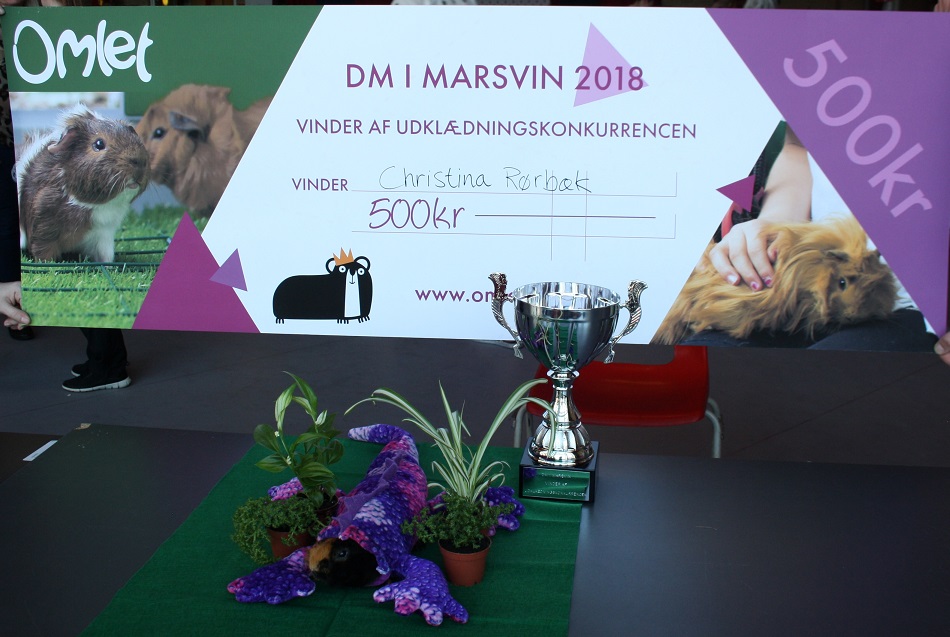

Here’s some of the other dress up entries!
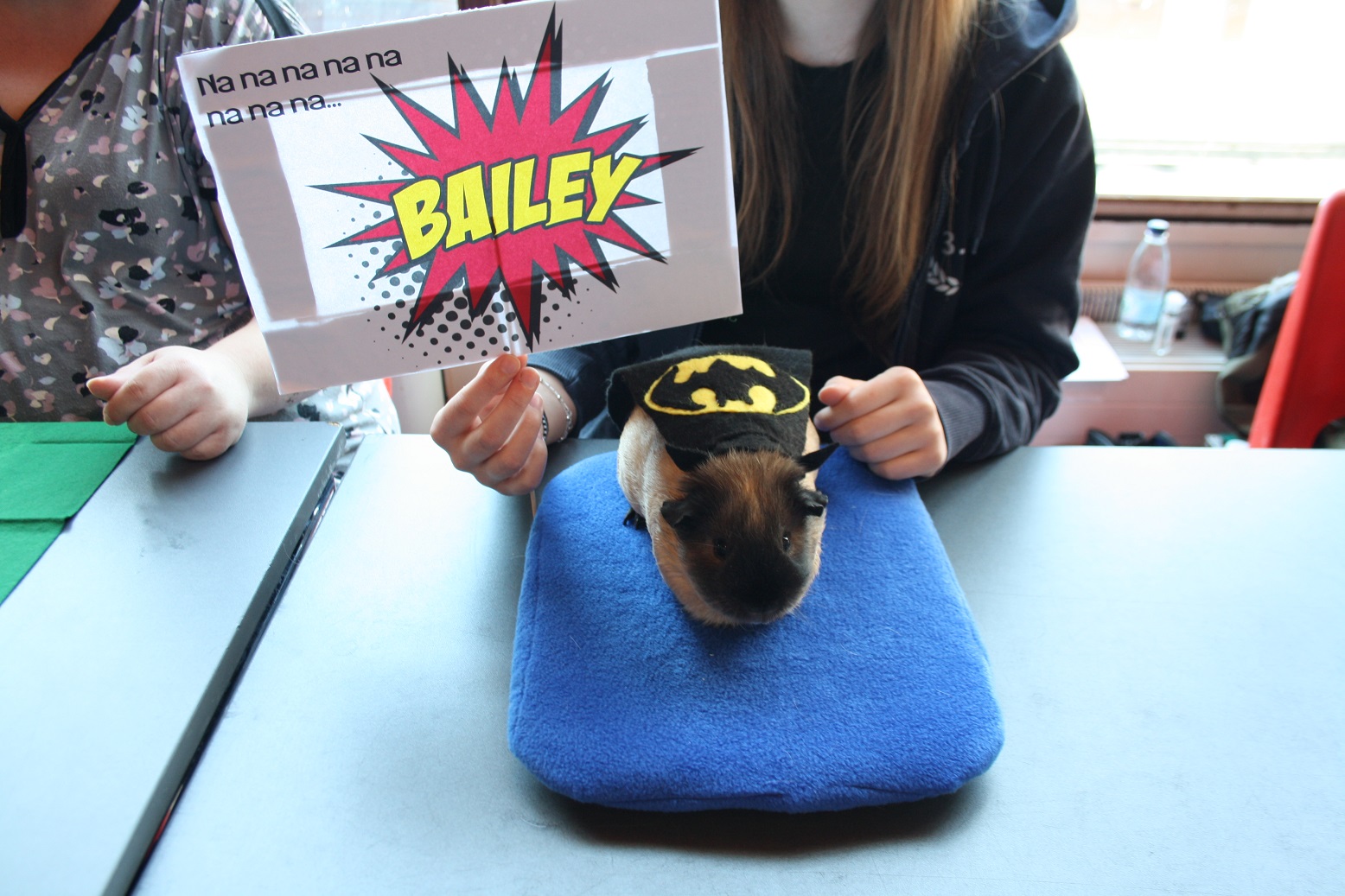

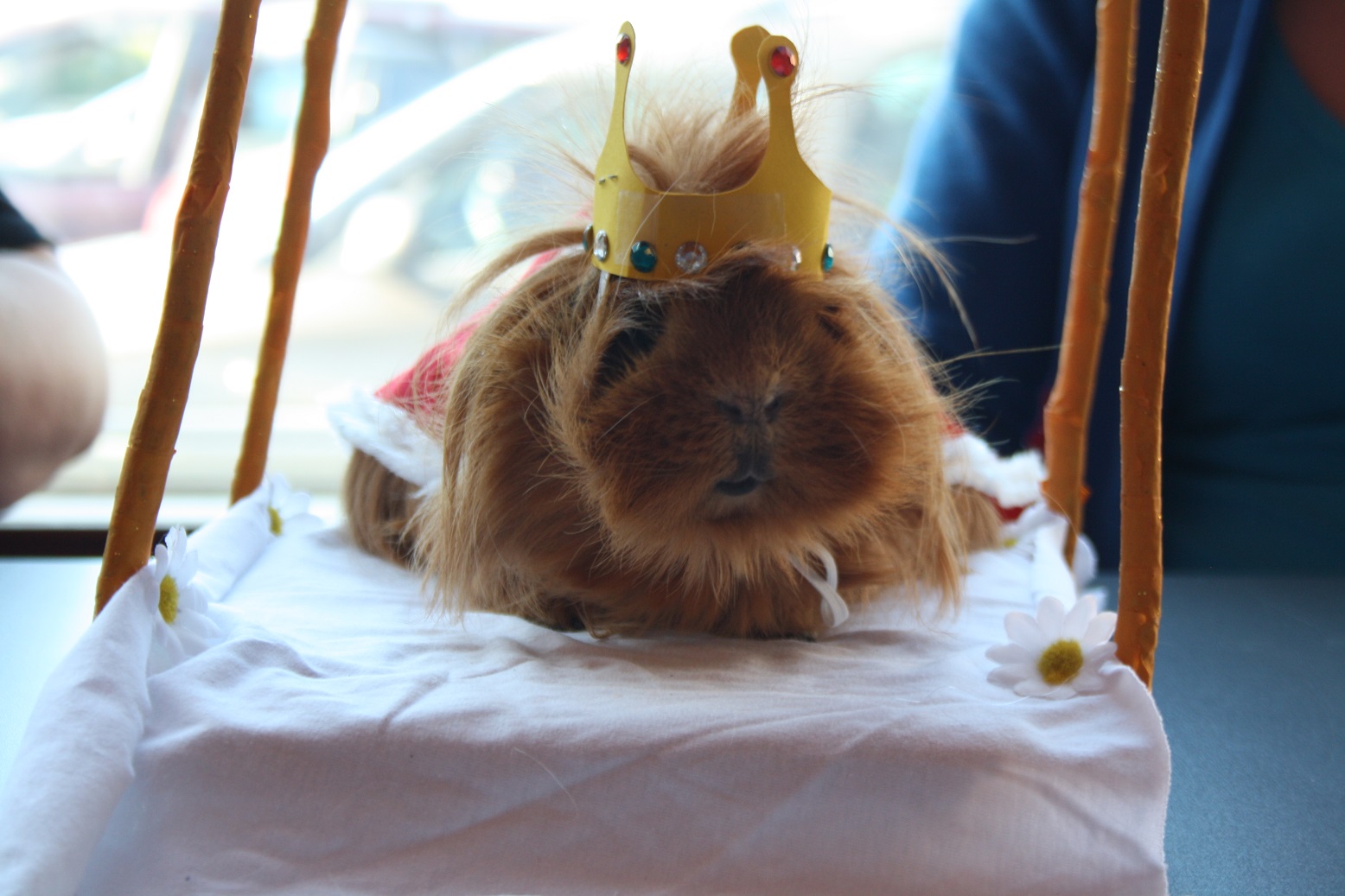
WINNER OF THE CUCUMBER-EATING COMPETITION
How did you prepare for this competition?
“The animals feel safe with us – this is the theory. They feel so safe when we’re standing down there at the table. So they come to us and because they know we’re there and looking after them, they just dare to sit and eat and relax. Even the little one there who’s 2 months old, he was number 3 in the competition. We were number 1, 2 and 3 – and that happens almost every time. We take the guinea pigs up and feed them every day, they’re real pets! So you could say that we are practicing every day.”
This family (mother and two sons) were number 1, 2 and 3 in the cucumber-eating competition this year. The boys are both 14 years old, so it’s the final year that they’re allowed to compete in the junior class. Next year they have to compete with the pets. How do they feel about this?
“Well we’re already allowed to compete with the pets now – it’s only the adults that can’t compete with the juniors.”
The family has only once returned home from a guinea pig show without the cucumber-eating rosette.
“This was in February. Their favourite guinea pig was ill and they decided that she should be allowed to compete in the cucumber competition one last time, even though they knew she probably wouldn’t win it.”
You can learn more about Guinea Pigs by reading the Omlet Guinea Pig Guide here
This entry was posted in Guinea Pigs on June 13th, 2018 by helenkennedy
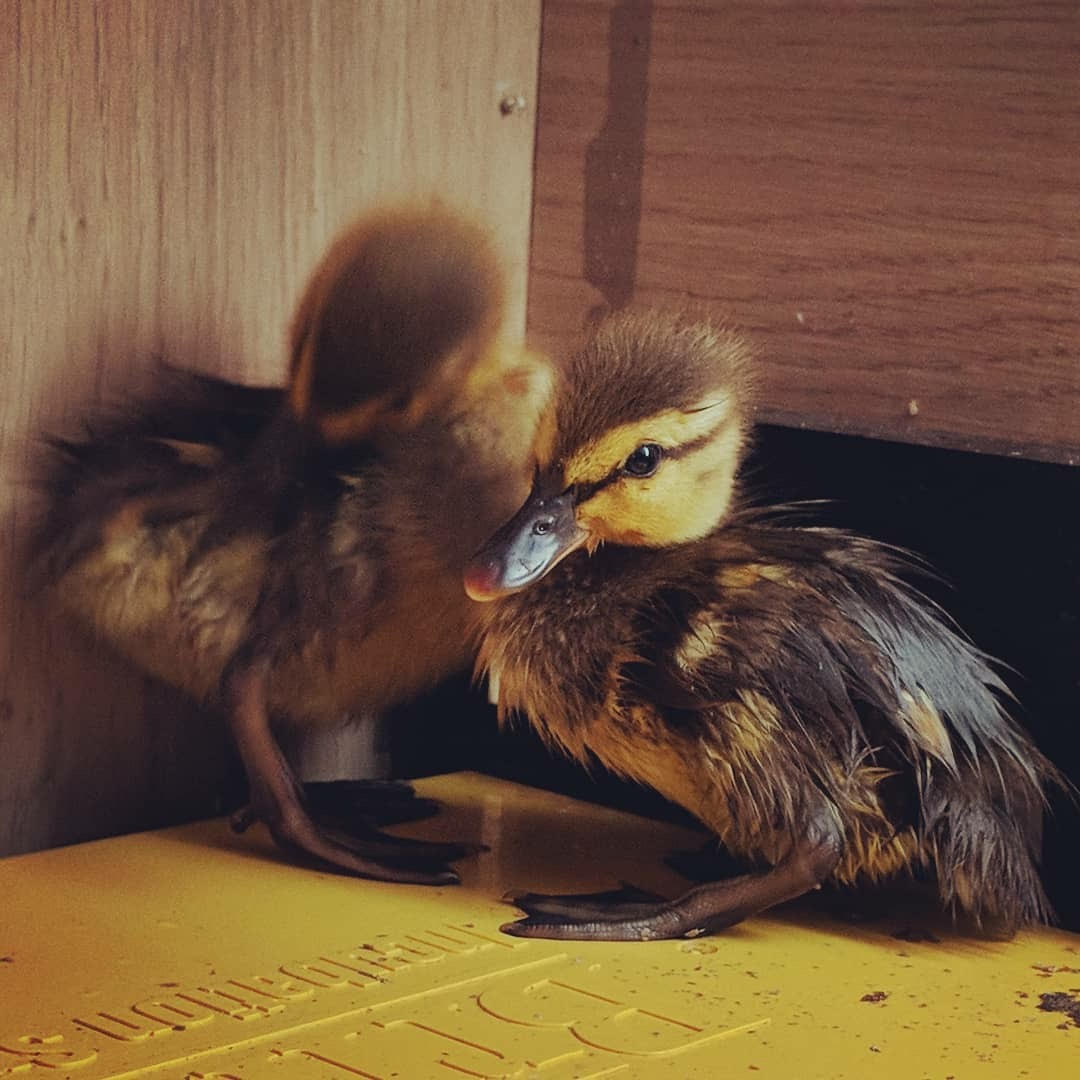

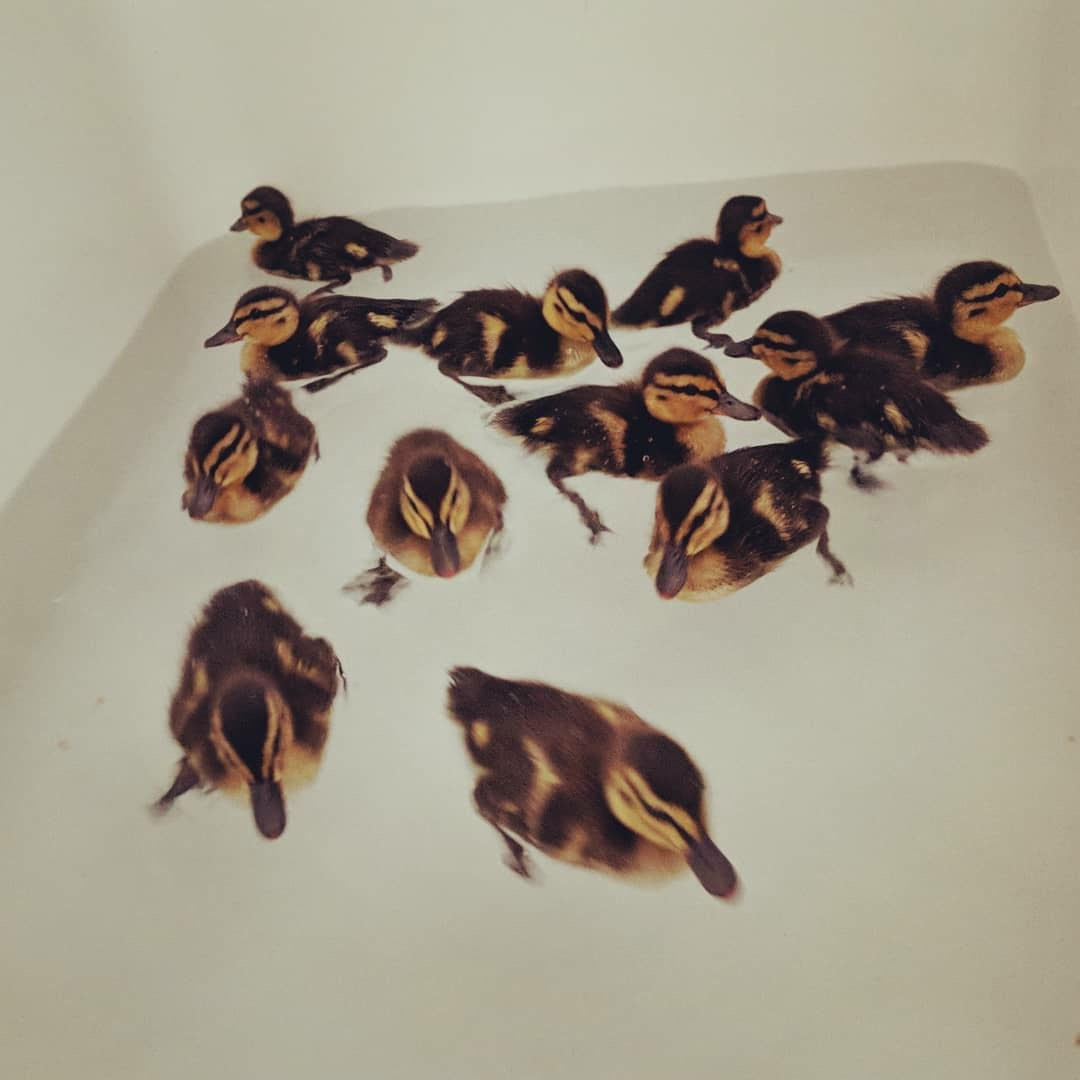
A few weeks ago the Springfield Sanctuary in Banbury gained a few extra guests. Two broods of ducklings arrived at the sanctuary a week apart. We’ve spoken to Joanne, the owner of the sanctuary to find out more about them and to see how they are getting on in their new
Omlet Walk In Run!When did the ducklings arrive?
The first group of 12 came in on 26th April from a village near Witney. The residents had been keeping an eye on them all day as there was no parent in sight. Apparently they were knocked about in the road, went in and out of the brook and got waterlogged, and then ended up in a garden! To keep them out of trouble one of the residents popped them in a recycling box in her garden, hoping mum would come for them. By evening they were cold and limp and there was still no sign of mum so they were brought all the way to Banbury for us to care for.
Less than a week later, on 1st May, we got a call from a house not far from us. This mum duck had laid her eggs under some decking (unbeknown to the homeowner!) and they all appeared one morning! The garden had no exit for the ducklings and so mum could not lead them to water. Mum left them and by evening hadn’t returned. So the ten little humbugs came to us too. So we then had 22 ducklings!
How old do you think they are now?
We think they were around 2 days old when they came in so the older ones are nearly 7 weeks and the younger ones are 6 weeks old now.
When are you hoping to release them?
They should be ready for release at around 8-9 weeks old, so we’re very close now! We are just waiting for their flight feathers to grow so they have the best chance at getting away from predators when they are released.
The younger ones are going to Swalcliffe School but we have not yet decided about the big kids. We will separate them into smaller groups to avoid over populating any area.
Have you named them?
We have named the groups but not individuals. The older ducks are the Big Kids and the younger are the Little Ones! There are only two we can tell apart from the others because the Little Ones are actually Hybrid and two of the ducklings are paler! Down by the canal in Banbury there are a couple of white pekin ducks which I’ve seen a few times. We think these ducklings came from this area and so are hybrid, mallard x pekin.
What do you feed them?
They are fed much like chicken chicks. They start on chick crumb for the first 3 weeks then they move onto Growers Pellets. In the last week or so we have added some duck and goose mix to the growers for variety prior to release. We will need to go and feed them for at least a week after release (gradually reducing the amount) to make sure they are finding their own food.
They love playing with the hose when I clean them! Ducks are ridiculously dirty and we have to clean them every 3 days. When we clean the pen it makes a lovely slurry of what we have called ‘Duck Poo Soup’ (it’s as pleasant as it sounds). The ducks have clean water in drinkers all the time but as soon as you get the hose out they start drinking. So I spend a lot of time sweeping up duck poo soup, dodging drinking ducks, and getting filthy! They also like to get in the paddling pool before it’s filled and paddle around playing in the hose spray.
Have you introduced them to the chickens or any other animals that you have at the sanctuary?
To continue reading about the ducklings as they get ready to be released, please follow the
This entry was posted in Pets on June 13th, 2018 by helenkennedy
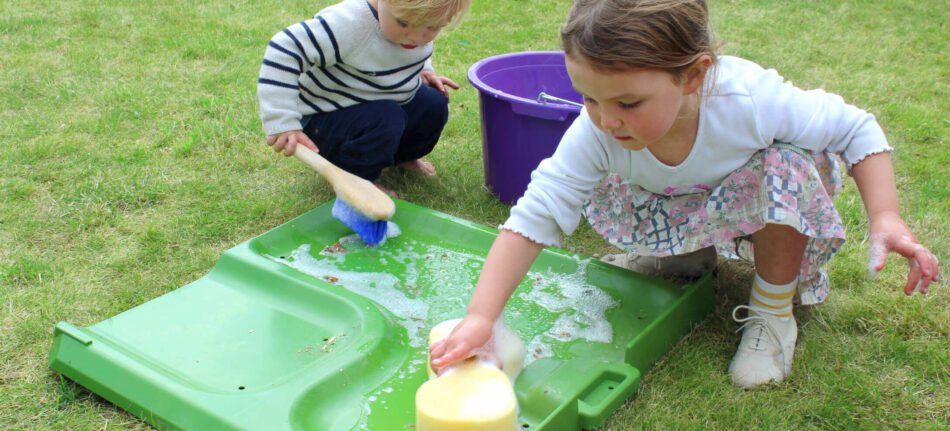
A familiar problem for both backyard chicken keepers and commercial farms lies in how to prevent and treat infestations of the birds’ environment with red (poultry) mites – also known as dermanyssus gallinae. Compared to other poultry parasites such as fowl ticks, lice and flies – mites are by far the most common, destructive and difficult to remove. Red mites are nocturnal parasites and hide themselves in gaps and cracks during the day, laying wait to wreak havoc on your flock at night.
Signs and diagnosis
Red mites are up to 1mm in size. The title “red” has been given to these mites because they turn from gray to red after they have had a blood meal. Infected hens will not be the picture of chicken health. Once the infestation becomes significant, your chickens will become anemic. Their wattles and the combs will appear pale and their egg production will drop significantly. Red mites also cause:
- Skin irritation
- Feather pecking
- Weight loss
- Restlessness in the flock
Your chickens will also probably be reluctant to go into their coop at night because that’s where the mites are lying in wait.
When checking your chicken coop for red mites, be sure to also check their perches or other chicken coop and run accessories. An easy way to check for red mites is by rubbing a white paper towel underneath the perches at night. If there are red mites, they will be on the underside of the perch after feeding on your chickens – you’ll see red streaks on your paper towel after coming into contact with them.
Prevention
An ounce of prevention is worth a pound of cure. But, when it comes to red mites, that’s sometimes easier said than done. Wild birds or new chickens can transmit red mites to your flock. Check your chickens’ health regularly to make sure all flock members are feeling their best.
It’s also a good idea to check for red mites routinely when you clean your chicken coop and use some preventative measures. Diatomaceous earth as part of the weekly clean is helpful in preventing and killing mites (DE is a 100% natural powder which dehydrates parasites it comes into contact with). All types of chicken coops can get red mites – however wooden coops tend to experience the most infestations.
Unfortunately, red mites can survive for up to 10 months in an empty hen house, so leaving a coop empty for a while doesn’t usually fix the problem. Choosing your housing carefully can help prevent infestations Omlet’s Eglu chicken coops are made from plastic which makes it very difficult for red mites to make a home. And in the event that there is a red mite infestation, they are quick and easy to clean. A quick blast with a pressure washer will be enough to send the mites packing.
6 Ways to treat red mites
1. Cleaning
If you find lots of red mites in the coop, it’s time for a deep clean. This type of cleaning will take several hours with a wooden chicken coop, but significantly less time with a plastic chicken coop. Remove all hens from the coop and strip it down as much as possible. Clean each part individually and allow for the coop and parts to dry completely.
2. Mite disinfectant detergent
Mix a mite disinfectant detergent (such as Smite Professional Disinfectant 1L Concentrate or Barrier Red Mite X 500ml Concentrate) with water (using the manufacturer’s guidelines). Apply this to the coop, ensuring you get it in the cracks and crevices. Omlet’s Eglu chicken coops don’t have these awkward and accommodating spaces, making red mites much easier to control. Concentrate your efforts where there is the highest population of red mites. Leave for 15-20 minutes.
3. High-pressure hose
Use a hose (preferably a pressure washer) to hose down the coop and the parts. Try to get in every nook and cranny, as this is where the mites like to hide. Leave for 10-15 minutes to dry. After this, you will most probably see more agitated mites crawling out. Repeat this process until there are very few mites emerging after each wash. Eglu chicken coops are made of heavy-duty plastic and are designed to be pressure washed with ease. One pressure wash will be enough to eradicate any existing mite population.
4. UV
Leave the coop to thoroughly dry. It’s ideal to perform coop cleanings on a sunny day where UV rays can kill some of the bacteria. Put the coop back together and add bedding. Dispose of the old bedding in a plastic bag in the garbage – red mites will happily find somewhere else to live if given the opportunity.
5. Red mite powder
Sprinkle your entire coop and your chickens with a red mite powder. Ensure you rub the powder onto the perches so that any remaining mites will have to crawl through it to reach your chickens.
6. Repeat red mite powder treatment
Re-apply the red mite powder every couple of days or when it has rubbed off. Red mites are primarily active during mild weather, making peak seasons the spring and fall. They will lie dormant throughout the rest of the year, waiting for their next opportunity to emerge.
Preventing red mites with Omlet
Any chicken coop can fall victim to red mites, but with any easy-to-clean plastic chicken coop, you’ll be able to nip infestations in the bud. Our chicken perches can be removed easily for a thorough cleaning, and our plastic Chicken Swing offers a mite-resistant place to find relief. Don’t fall prey to red mites – take control with Omlet’s chicken products.

This entry was posted in Chickens on June 5th, 2018 by lara.solomon
















